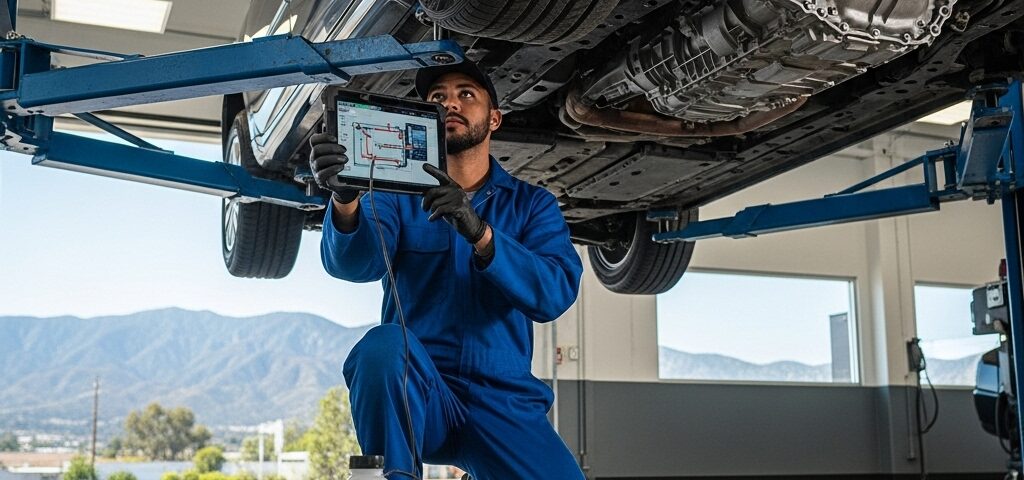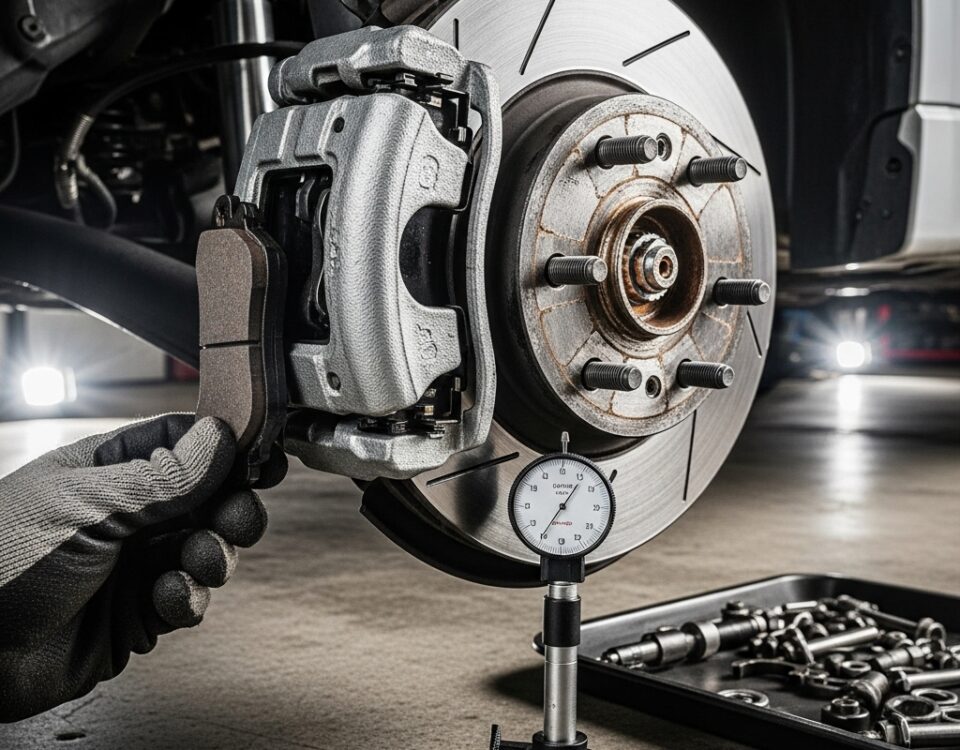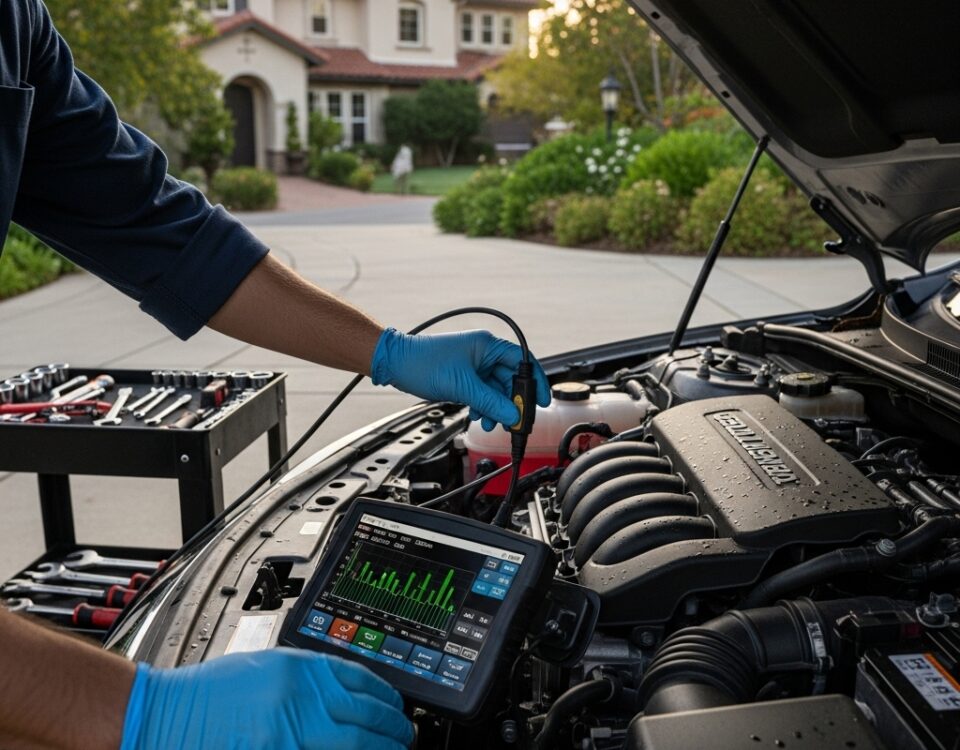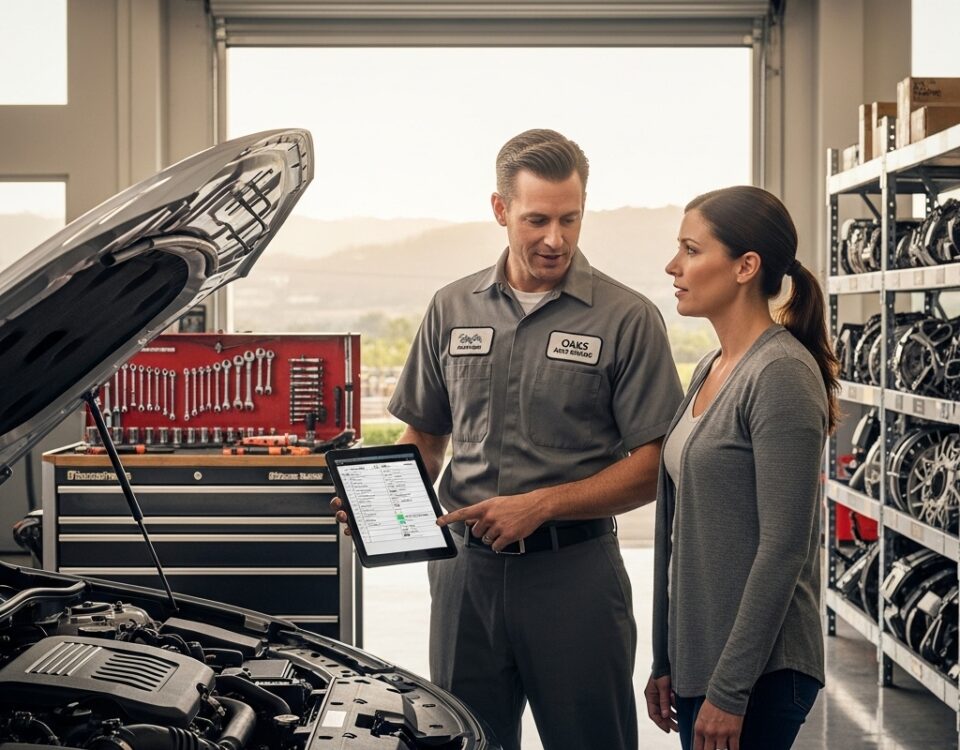
Why Choosing a Specialist Matters for German Auto Repair
October 3, 2025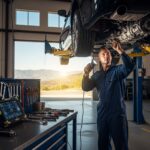
Transmission Repair Near Me in Thousand Oaks California
October 5, 2025Transmission concerns can unsettle even the most seasoned driver, especially when the signs are subtle at first—an early-morning shudder on the 101 incline, a faint delay slipping into gear after stopping near the Civic Arts Plaza, or a new vibration at cruising speed around Westlake Boulevard. In Thousand Oaks, where daily routines mix canyon grades with freeway stretches, the transmission’s job is especially demanding. Understanding those local strains is the first step to making smart, confident decisions. And for many drivers looking for trustworthy guidance, we point them toward a local-first mindset grounded in careful diagnostics and practical steps, the same mindset people expect when they search for dependable car repair in our area.
As a long-time technician serving the Conejo Valley, I’ve seen how the blend of warm summer afternoons and cooler morning starts changes the way transmissions behave. Fluid viscosity, clutch material, valve body function, and even electrical connectors respond to temperature swings and elevation changes. When you add in the rhythm of Thousand Oaks traffic—short hops between errands, followed by longer highway runs—the transmission is constantly adapting. Getting to the root of issues means reading those patterns carefully rather than jumping straight to parts replacement.
Recognizing early signs before they snowball
Most transmission problems don’t arrive all at once. They leave a breadcrumb trail: a slight flare in RPM during a shift, a soft thud when engaging reverse, or a faint whine that shows up on warm days after a climb from Moorpark Road to Rolling Oaks. We treat these as clues. The earlier we correlate them with temperature, speed, and driving conditions, the simpler and more affordable the solution tends to be. For example, a small seep at a cooler line might create a slow fluid level drop that only becomes noticeable under heat, triggering late shifts or mild slipping. Addressing the cause at that stage can restore normal operation without a drama-filled repair.
Another common Thousand Oaks scenario involves sporadic check engine lights tied to transmission solenoid performance. Modern cars are quick to alert when a shift deviates from expected timing. But a code is a starting point, not a verdict. We confirm with line pressure tests, fluid analysis, and targeted road tests that recreate your specific conditions. If your concern only appears after descending Lynn Road or during a steady 60 mph cruise toward Newbury Park, we try to drive that exact route. Context validates the data and leads to solutions that stick.
Diagnostics that respect your time and your car
Our process begins with a conversation about what you feel and when you feel it. Is the hesitation worse when cold or hot? Does it favor certain gears? Do you notice it during uphill acceleration or when slowing to a stop near the Oaks Mall exits? Then we connect advanced scan tools, monitor live data, and record behavior over a variety of conditions. We look at commanded gear versus actual gear, torque converter lockup behavior, and temperature profiles throughout the drive. The point is to build a clear picture before we touch a single component.
We also sample the fluid, because transmission fluid is a storyteller. Color, smell, and particulate content reveal friction material health and thermal history. A fluid that smells overheated after relatively calm driving points toward restricted cooling or a slipping clutch. Conversely, clear fluid with normal odor but with a single out-of-range solenoid reading may lead us to an electrical connector or a sensor harness issue rather than internal damage. Thoroughness prevents guesswork and keeps you from paying for fixes that don’t address the root cause.
Maintenance that protects against local stresses
Driving in Thousand Oaks means contending with heat, grade, and mixed-use cycles. Each of these affects fluid condition, and fluid condition is everything for transmission longevity. We recommend maintenance intervals based on how you actually drive, not just mileage on a page. If your routine includes frequent climbs into the canyons or regular trips toward Agoura Hills in summer traffic, we consider a fluid service strategy that keeps viscosity and additive packages healthy. It’s a measured approach that extends component life and keeps shifts crisp, even when the mercury rises.
We also emphasize airflow and cooling integrity. Leaves and debris can compromise cooler efficiency, and a marginal thermostat can skew operating temperatures in ways that you only notice on long grades. Part of protecting the transmission is ensuring the engine cooling system and related airflow paths are operating as designed. A whole-vehicle perspective is essential, because the transmission never works alone.
When a repair is necessary
Sometimes, despite prevention, parts simply wear out. Clutches lose material, valve bodies develop wear, or internal seals age. When that happens, a calm, evidence-based plan is your best ally. We explain what the data and inspections show, outline options, and stage the work logically. If an external sensor or solenoid is misbehaving, we verify wiring and connector integrity before replacement. If the fluid is burned and clutch debris is present, we’ll discuss whether a rebuild or replacement makes more sense for your car’s age and goals. There is no one-size-fits-all answer, but there is always a best fit for your situation.
We also consider the broader health of the vehicle. If engine mounts are soft or a driveshaft component is worn, they can masquerade as transmission trouble or add stress to the system. Fixing the transmission while ignoring supporting components leads to repeat visits, which helps no one. We prefer to solve the whole problem so you can get back to normal life without worrying that the next stoplight will bring a new sensation.
Driving habits that make a difference
Small changes can buffer your transmission from the hardest moments. Let the car warm briefly before aggressive acceleration, especially on cool mornings. During long downhill stretches, pay attention to engine braking and avoid riding the brakes to the point where the transmission must constantly adjust to varying speeds. When towing or carrying heavy loads up into the hills, keep an eye on transmission behavior and don’t be afraid to select a lower gear manually if your model allows it. These habits, simple as they seem, protect clutches and manage heat.
Urban portions of Thousand Oaks also present their own quirks. Frequent short trips introduce cycles of start-stop shifting that never let the fluid reach its ideal temperature, while extended idling in summer can raise temperatures without airflow. The solution isn’t to change your life; it’s to adapt maintenance and pay attention to the signs your car gives you. In the middle of any repair plan, we remind customers that well-timed car repair paired with thoughtful driving keeps the transmission calm and predictable.
Communication that builds confidence
We keep you informed in plain language. If we find a borderline condition that is safe to monitor, we’ll say so and explain what indicators to watch. If a repair is urgent, we’ll tell you why and what risks exist if it’s delayed. Photos, data logs, and a simple summary help you see what we see. This clarity turns an anxious situation into a manageable plan, which is exactly what you need when your daily routine depends on a smooth, reliable transmission.
We also provide a roadmap for future visits. If today’s service returns your shifts to normal but reveals an aging mount or a minor leak, we’ll note it and schedule a follow-up check. Knowing what’s next helps you plan, and planning is key to keeping surprise transmission repairs off your calendar.
Frequently Asked Questions
Q: What are the earliest signs my transmission needs attention?
A: Watch for delayed engagement when shifting from park to drive, subtle flares in RPM between gears, new vibrations at cruising speed, or a check engine light tied to shifting events. If these symptoms appear after certain drives—like hot afternoons or uphill climbs—share that context. It points us to the cause faster.
Q: Is a fluid change always the answer when shifts feel off?
A: Not always. Fluid condition matters, but the underlying cause may be electrical, mechanical, or thermal. We inspect and test first, then decide whether fluid service is part of the solution. Guessing at fluid alone can mask a problem without correcting it.
Q: Can driving in Thousand Oaks really stress my transmission more?
A: The mix of elevation changes, summer heat, and combined city-freeway driving creates a broad operating range for the transmission. That variability tests fluid and clutch materials. With the right maintenance strategy, though, your transmission can thrive here for a long time.
Q: What if my transmission problem is intermittent?
A: Intermittent issues are common. We replicate your conditions as closely as possible, review stored data, and track live readings during a targeted road test. It may take a bit more patience, but this approach prevents unnecessary parts replacement and leads to lasting fixes.
Q: Should I keep driving if the check engine light is on?
A: If the light is steady and the car feels normal, you can usually drive carefully to a shop. If it’s flashing, or the car slips, shudders, or won’t engage properly, stop and seek guidance. A quick call and a measured plan protect the transmission from further harm.
Q: How often should transmission fluid be serviced here?
A: It depends on the vehicle and how you drive. Cars that see frequent hills, towing, or hot summer traffic may need shorter intervals than those with gentle, mostly highway miles. We tailor recommendations after assessing your patterns and the fluid’s condition.
Ready for a smoother drive through Thousand Oaks?
If your car has been hinting at transmission trouble, don’t let uncertainty linger. A focused diagnostic and a clear plan can return your drive to calm, confident shifts—without the guesswork.
Reach out today to schedule an evaluation and map the best next steps for your vehicle. For thorough, locally informed car repair, we’re ready to help you get back to seamless miles across the Conejo Valley.


